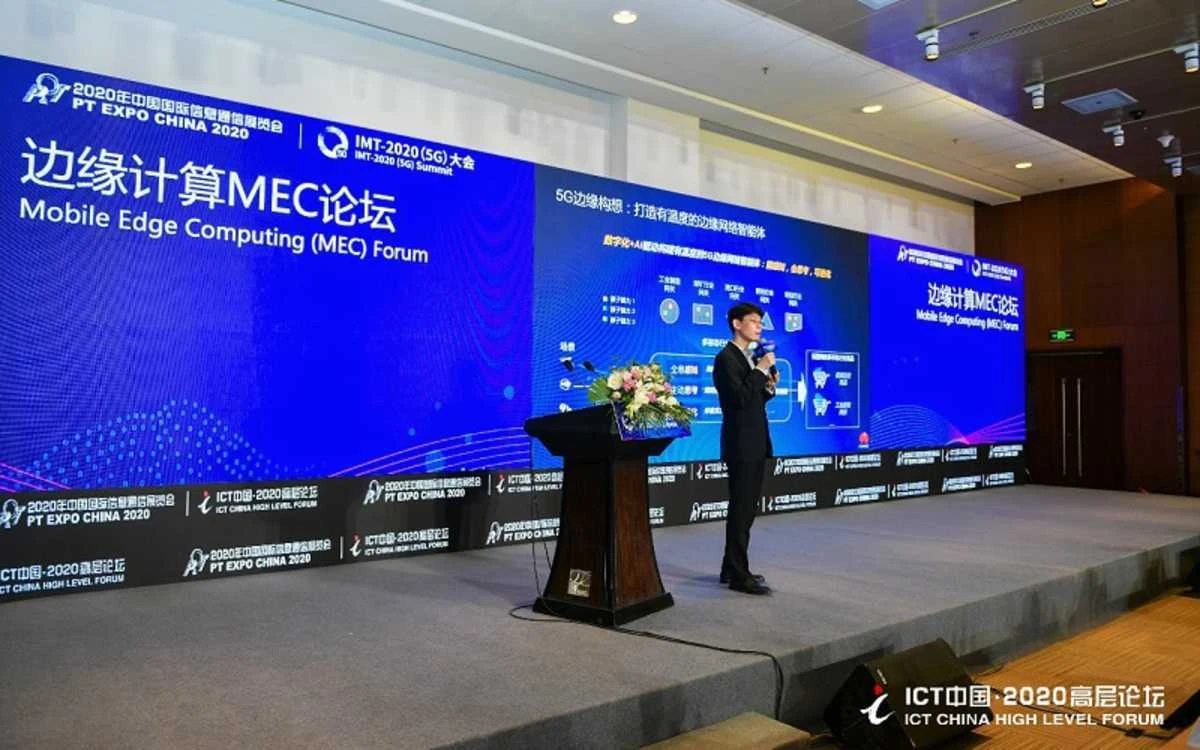At PT Expo China 2020, Huawei launched the first 5G MEC-based Industrial Visual solution for the manufacturing industry. The solution encompasses the lossless compression-capable SDK, MEC platform (MEP), user plane functions (UPFs), lossless decompression service, and machine vision apps.
The lossless compression-capable SDK is integrated with 5G industrial cameras that work with the lossless decompression service on the MEC node. With this backing, these cameras can compress HD images of one-third to one-sixth of their original size, greatly reducing uplink bandwidth usage.
Liu Zhi, VP of Huawei Packet Core Network product line, explained that Huawei 5G MEC-based Industrial Vision Solution leverages the cloud-edge-device synergy and lossless compression technologies.
These technologies are key to efficiently reducing the bandwidth required to transmit HD images in the manufacturing industry, realizing agile deployment and automatic O&M, and guaranteeing data security. The 5G MEC-based Industrial Vision Solution paves the way for wide application of the 5G MEC solution in the industrial vision industry.
For example, Microview released the first 5G MEC-based industrial cameras embedded with the above-mentioned Huawei SDK and 5G modules. The cameras produce HD images with tens of millions of pixels, which it can then losslessly compress. This help reduce bandwidth for transmission and therefore allows customers to install more cameras in their factory, helping them adhere to requirements for automated quality inspection in the manufacturing industry.
Let’s look at the success of this initial tryout in terms of device-edge synergy. The lossless decompression service on the MEC node works with cameras using the lossless compression-capable SDK, and can perfect reconstruct images.
Furthermore, Huawei 5G MEC-based Industrial Vision solution allows users to remotely set, control, upgrade, and maintain the cameras, and remotely update the lossless decompression algorithm according to service requirements.
In terms of cloud-edge synergy, Huawei 5G MEC allows users to run the industrial vision algorithm on computing nodes at the operators’ edge, providing dense computing power, reducing cost, and satisfying high data security requirements.
Huawei MEC nodes innovatively collaborate with the training platform on the cloud to periodically update the industrial vision algorithm, and manage algorithms used on different edge nodes in a unified manner, simplifying O&M.
The Huawei 5G MEC-based Industrial Vision solution speeds up delivery of industry vision applications to customers in the manufacturing industry. With high bandwidth, reliability, and connection density promised by 5G, customers can install industrial cameras without laying out cables, update AI algorithms used on edge nodes and cameras in a prompt manner, and improve efficiency of flexible manufacturing and automation.
The rise of new infrastructure construction fuels 5G MEC applications. The Huawei 5G MEC-based Industrial Vision solution is a success for the 5G MEC industry. It will boost development of MEC applications, foster the 5G MEC ecosystem, and give impetus to 5G commercial use.



